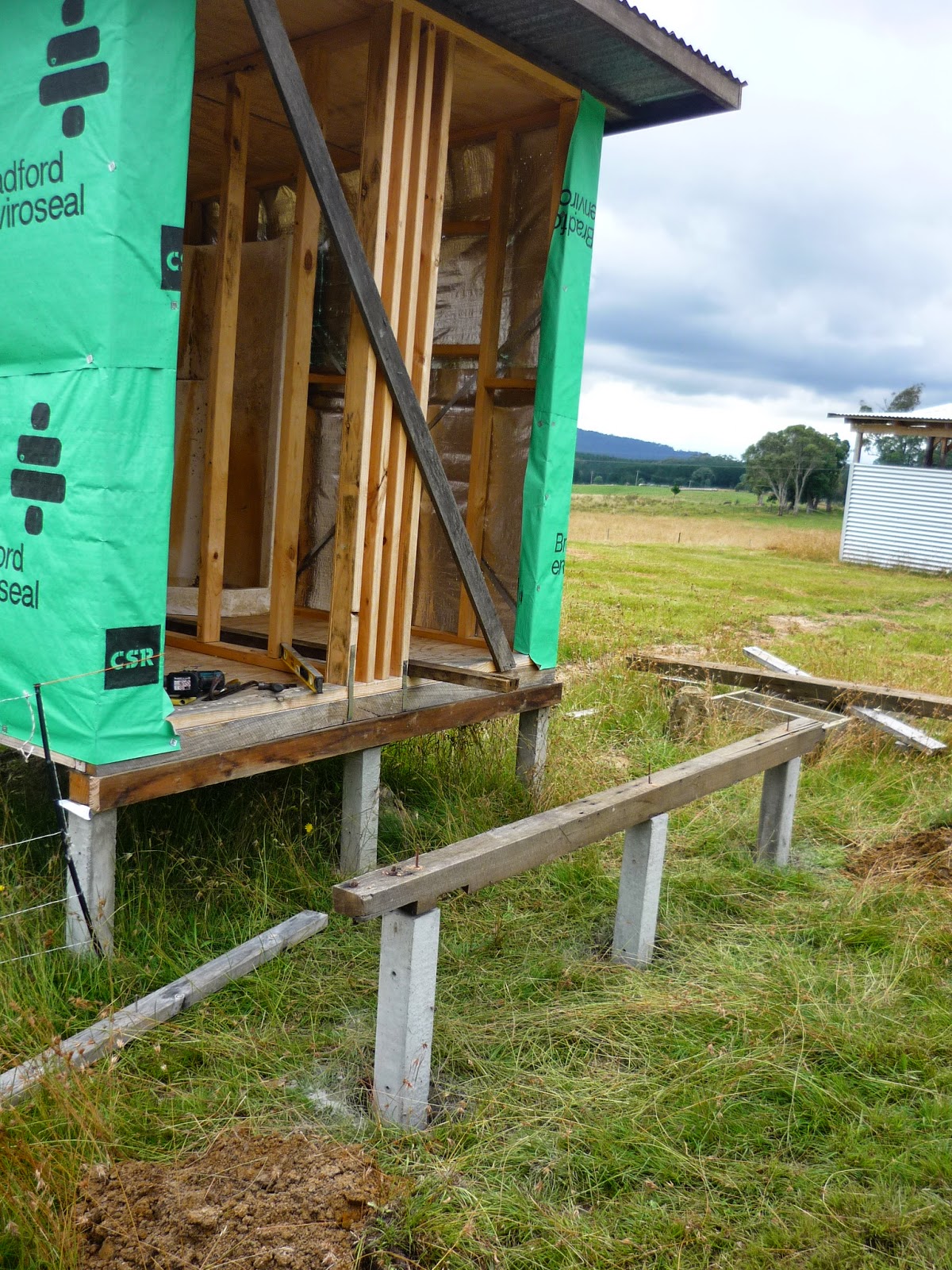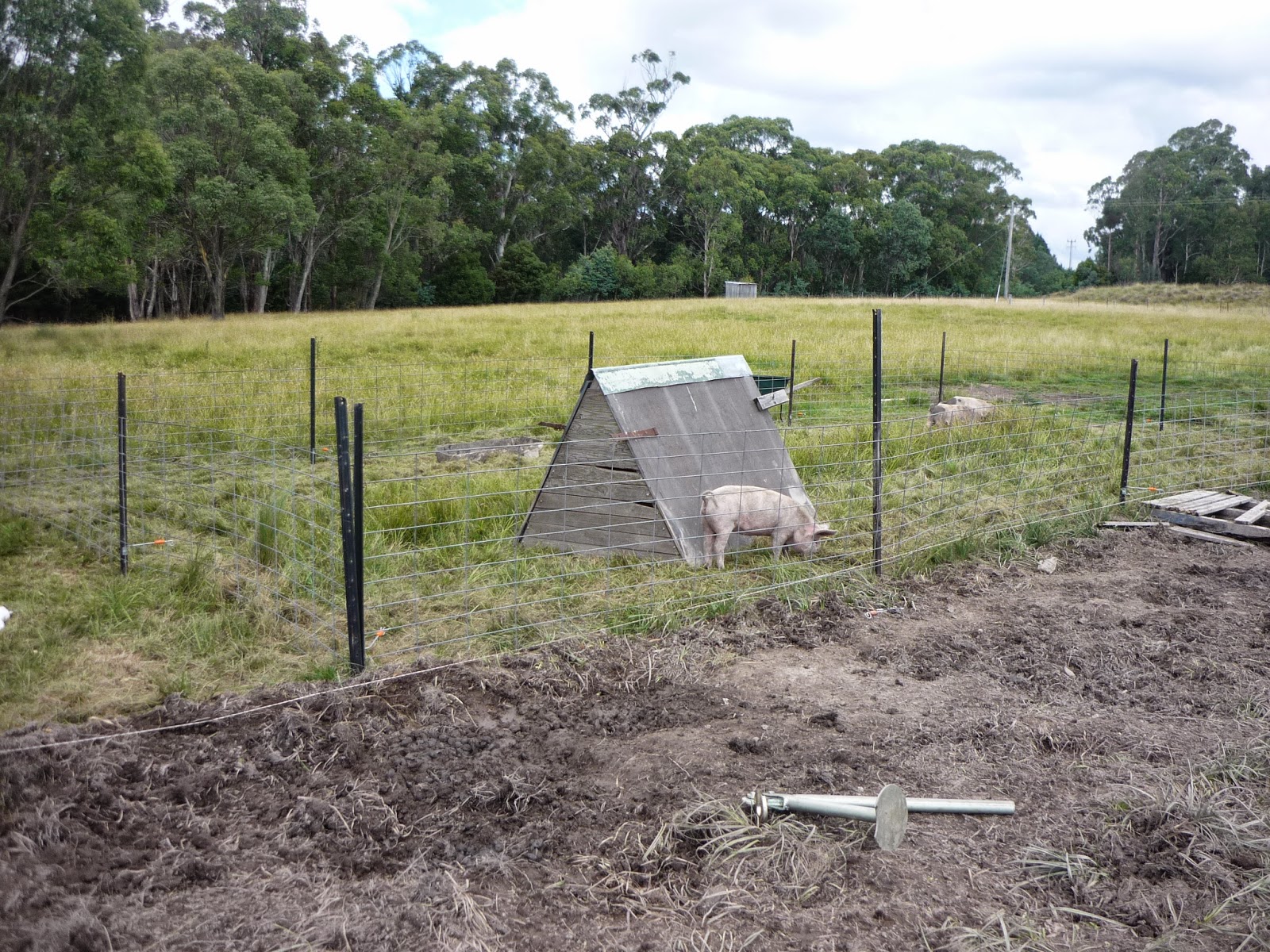I like to walk them the 800m or so to where the bus stops - the pleasure of small warm hands to hold and drag up the hill.
Hailey is standing in the dairy demanding breakfast so milking is the next task. The calf is let in and the milk strained and put in the fridge.
One of the goat kids is limping so when I take up some feed to the girls and to poor Curly - still locked in the shed after his fence jumping exploits - I catch the little brown haired doe. This doe has a lot of spirit and before she was too big would frequently get through the hinge-joint fence and wander about. She tugs and cries but when I hold up legs and place her on her back she quietens. After plenty of poking, prodding and bending I can find nothing wrong with the leg - it could be a muscle injury. She is let go - I'll have to keep an eye on her.
The kid with the sore leg
Toby enjoying some deer bones
I have to unload the car from last night's trip to town. A freebie blue barrel that used to contain truck wash is headed for the septic system in the paddock and a box of apples has to be sorted between worth ripening or pig food.
The pigs need their combination of rotten fruit, excess zucchinis, kitchen scraps and pig grower pellets. They've kicked over their food trough but they go crazy over the surplus milk. The container I pour it into is attached to their water trough. It was a good size a few weeks ago but now the pushing and shoving that goes on will smash it to pieces and strain sisterly relations. I pause to reflect while the water refills.
Pig trough filling
The yard is growing dock and thistles so an hour with the whipper-snipper gets some of it back to a flat earth policy.
The regular tasks over I gather some tools and materials to head out to the far paddock to nail on the deck for the camp toilet block. The battery on the farm ute is flat so I walk. Two hours of happy banging and cutting and the deck is done.
Deck done!
While I am there I climb into the potato patch which is between the chook runs to dig up some spuds for dinner. First I have to clear the raspberry canes from the net so it can be stored away till next berry season. Three potato plants reveal about twenty Dutch Cream taties - enough for now.
Time to do some weeding in the bed I need to plant some winter crops in before....
It's time for the kids to straggle back over the paddock. The rest of the day is spent in domestic bliss with lots of singing - five are in a Country Music Talent Quest tomorrow. All in a day's work.






































